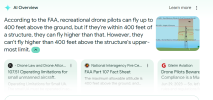You would technically be below zero AGL,
That's simply not true. Technically or otherwise.
AGL is above ground level, not above obstructions on the ground. Using that argument you could legally fly at 1000' AGL near that big tower south of New Orleans near the Naval Air Station.













